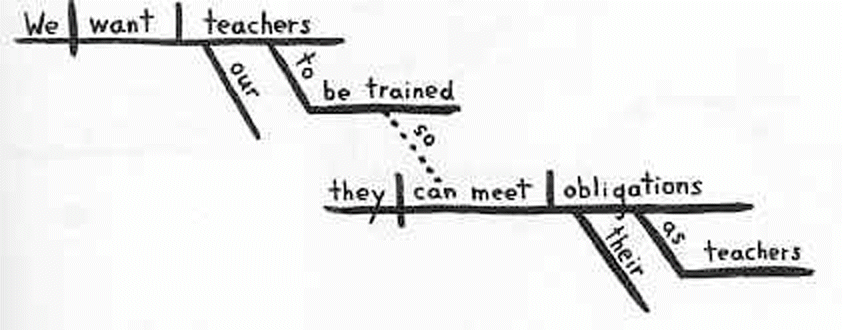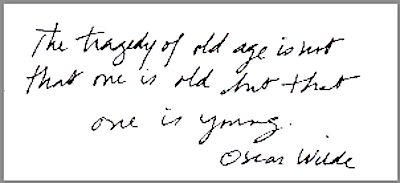The Rise and Fall of Handwriting
Kitty Burns Florey
(Melville House)
Several years ago we wrote a loving review of Sister Bernadette's Barking Dog, a handsome book on the virtues of diagramming sentences. The best part of it was a diagramming of famous sentences, including one from Proust's Remembrance of Things Past, and a break-down of one of George Bush's extended dangling paisley-footed run-on sentences, in a speech about American education:
The book was best at making it possible for us word nuts to figure out the difference between verbs, nouns, pronouns, adjectives, adverbs --- and even the 'yous' that somehow came to be understood. It was fun and funny and we said so. Kitty Burns Florey, the author, then wrote us an extended fan letter about our extended love-letter review, and after some back-and-forth, she sent us her most recent book, which is a study of handwriting, titled Script and Scribble.
In the wonderfully discursive reaches of this book, Ms. Florey takes on computers, graffiti, calligraphy, the history of the alphabet --- which grew from Sumerian "pictograms" --- and Egyptian hieroglyphics, which ended up creating the Phoenician alphabet, with its twenty-six letters. She discusses penmanship clubs: they still exist, although there seems to be some doubt as to whether they should be labeled associations for "penmanship" or, oh me, associations for the promotion of "penpersonship."
She then moves on to handwriting in the Middle Ages, and on into a diverting study of the history of quills and pencils and ink and fountain pens. On the latter she offers her friend Danièle's father's sage advice,
There are three things a man never lends out: his car, his wife, and his fountain pen.
She takes a momentary look at ballpoints which I remember were always leaking all over my fingers and were advertised as being able to be used to "write under water" as if we, on a weekend at Green Cove Springs, would dive in with note paper and pen to take notes on the fish that might be darting about.
Florey ends with an aside about famous pens that she has known and loved (her favorite being the Esterbrook "Dollar Pen" which was, in our youths, everywhere), and even digs up information on the most expensive pen of all times, the Waterman Sérénité, which goes for a cool $9,349, complete with silver body, gold nib, and trim in "your choice of crocodile skin, quail shell, mother of pearl, or gold dust."
§ § § I'm a sucker for discursive books like this one, especially those that show a keen attention to detail. The footnotes are jewels in their own right, mounted at the sides of the pages (just where they should be, not below ... where they tend to get lost). There is one that proves that Henry James was not only a master of 19th century morals and manners, his notes of condolence
were so fine, so properly measured and elegantly turned, they seemed almost worth dying for.
There is also the author's slight touch of whimsy where she shows us a sample of her own handwriting. She reports, "Over the years, I've become less flighty and self-conscious, and so has my handwriting."
It gradually ceased its adventurous traveling, settling at last into a fitfully legible debased scribble that often looks, to me, not only plug-ugly but slightly berserk.
She then offers a splendid quote from Oscar Wilde which now hangs in elegant Palmerian script on my refrigerator:
--- L. W. Milam
